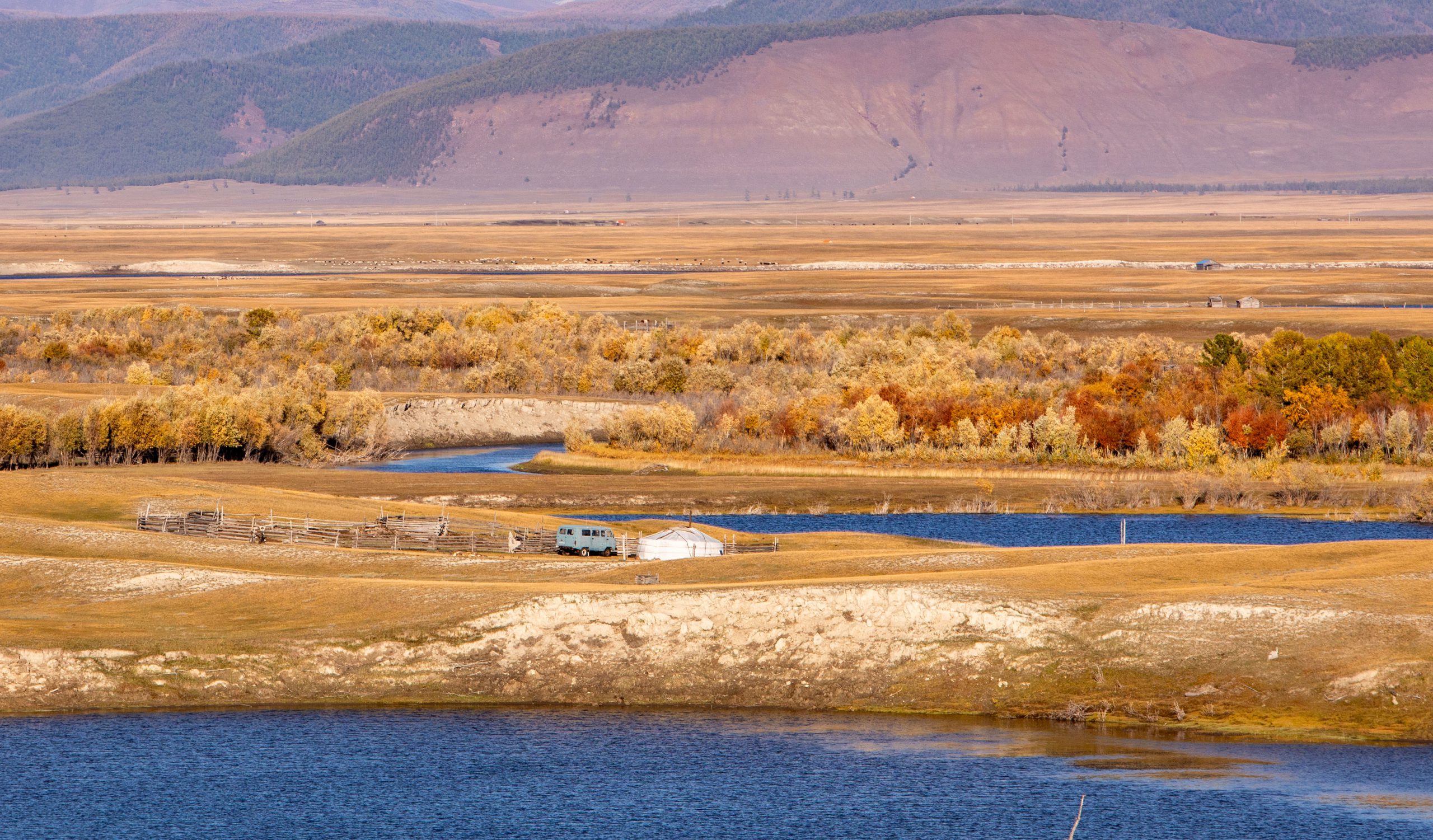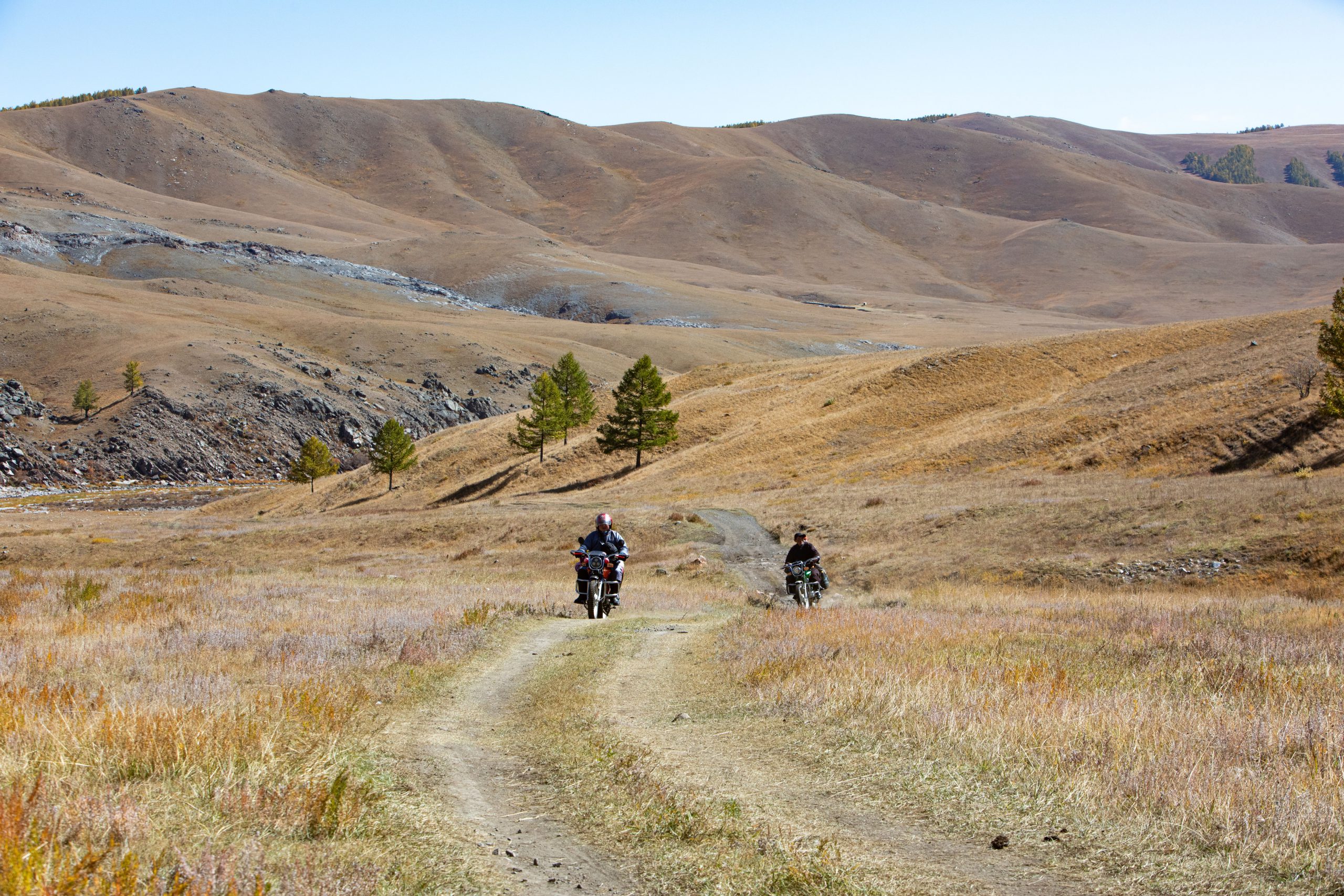Story: Nguyen Phuong Thanh
Photos: Phi Thi Bich Ngoc
Tranquil and serene, Mongolia has sown the seeds of longing in my heart, following a long journey through this wild and windswept land.

Nestled deep in the heart of the Asian continent, characterized primarily by its grassy steppes and semi-deserts, Mongolia entices visitors who are enchanted by nature and a free-spirited, nomadic way of life.
We began our Mongolian journey in the lush central grasslands, traveling southward to the edge of the Gobi Desert, then circling back north to visit the ancient fortress of Genghis Khan. From there, we ventured deep into the forests to experience the wild lives of reindeer herding families. Our journey concluded in the modern capital of Ulaanbaatar. Our over 3,000-km-long road trip through diverse landscapes brought unforgettable experiences and a rich tapestry of emotions.
Sunset over the Gobi Desert
Situated in the southern part of Mongolia and northeastern China, the Gobi Desert ranks among the world’s top ten largest deserts, spanning an area of 1,300,000 square kilometers. Wind, sand, and drastic temperature variations between day and night are key characteristics of this land. Not everyone has the necessary stamina and adventurous spirit to experience life deep in the desert.
We stopped at Kongo, on the outskirts of the Gobi Desert, and spent the night in the tent of a camel herding family. Even on the fringes of the desert, the dramatic shift in weather was unmistakable. In the day it was blazingly sunny, yet dusk brought a piercing cold wind. The climate was harsh, but the joys and surprises of desert life evoked truly unique emotions. We felt a sense of precariousness as we sat on the backs of two-meter-tall camels, swaying our way through the desert and watching the majestic white dunes, which stretched out with every gust of the wind. The fiery sunset brought a feeling of desolation as we watched the silent silhouettes of camels etched against the sky. When night fell, the tranquility was so profound. The silence was total as we stepped from our tent and gazed up to see a dazzling sky full of stars right above us. Time seemed to stand still, and the peace was strangely calming.

Golden autumn in a reindeer village
Located in the north of Mongolia, where expansive Taiga forests stretch toward the Russian border, Tsagaan Nuur is known as the homeland of the Tsaatan people, the only tribe in Mongolia still living off reindeer herding and hunting in the forest. In the past, the Tsaatan primarily raised reindeer for meat, sold their hides, and used them for transport.
Since this occupation yields a low income, less and less people are herding reindeer for a living. Today, only about 300 Tsaatan people in Mongolia still herd reindeer. These animals are perfectly adapted to harsh, cold climates and flourish during the winter months, which is why reindeer herders often choose areas deep within the Taiga forest for breeding. The Tsaatan people are no exception; they live in relative isolation from modern society, preserving their traditional nomadic lifestyle.
We arrived at a reindeer village on an autumn day in early September. The weather had turned chilly, and autumn had painted the forest in hues of gold and red. We were extremely fortunate to arrive just as the reindeer were moving closer to the forest’s edge, when they were strong enough to allow us to ride them from the edge of the forest into the village, instead of having to ride horses like other tour groups.
After traversing mossy and wet areas in the forest, we arrived at the dwellings of the reindeer herding families. More than a dozen small tents were hidden beneath coniferous trees, with the brilliant golden autumn foliage giving us the feeling of stepping into a forest in a fairytale.
The tents are quite modest and much simpler than the nomadic tents we had seen on the grasslands along the way. These tents are constructed from the trunks of pine trees, with three trunks joined together to form a pyramid, reinforced at the top, and covered with a layer of fabric to shield occupants from the rain and sun. A wood-burning stove is placed in the center for warmth and cooking. Around the stove are sleeping quarters and spaces for everyday items. The reindeer herders keep their possessions to a minimum to facilitate their seasonal migrations. Life here is almost entirely separate from the modern world, with no electricity, internet, or phone signal. There is only the whisper of nature, the humming of the wind, the rustling of pine leaves, the munching of reindeer eating grass, and the gentle crackling of a wood fire.
The following day, we took another leisurely ride on the backs of the reindeer, leaving the forest behind and continuing our journey across the vast, endless grasslands. The scent of flora, the rhythmic clip-clop of the reindeers’ hooves circling the camp, and the sight of young Tsaatan boys and girls with rosy cheeks riding reindeer through the forest have all become unforgettable memories.










